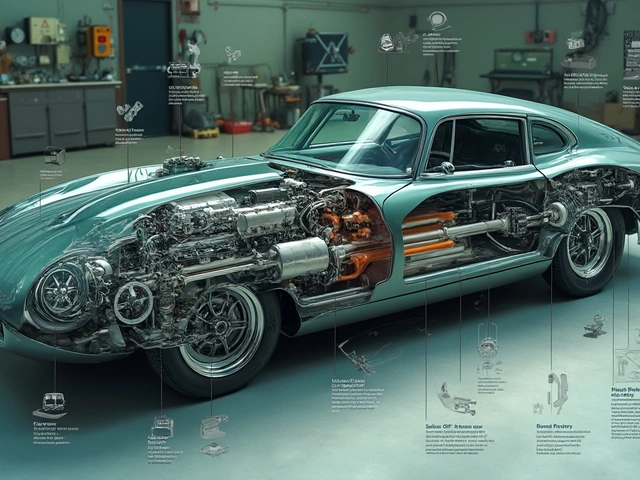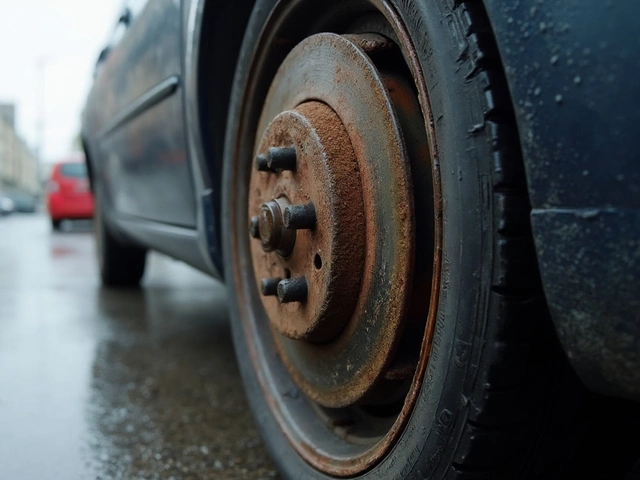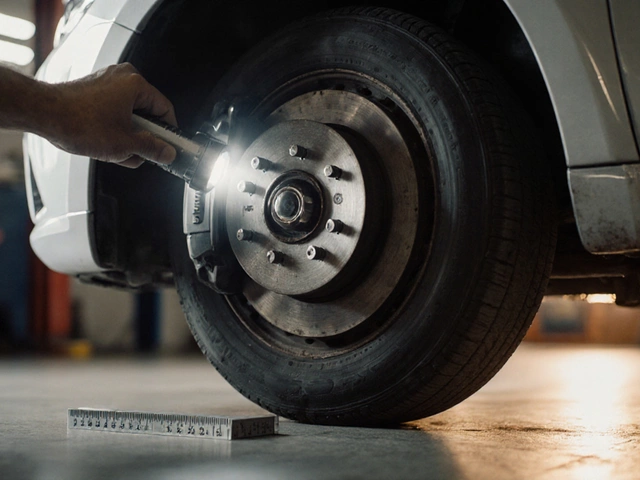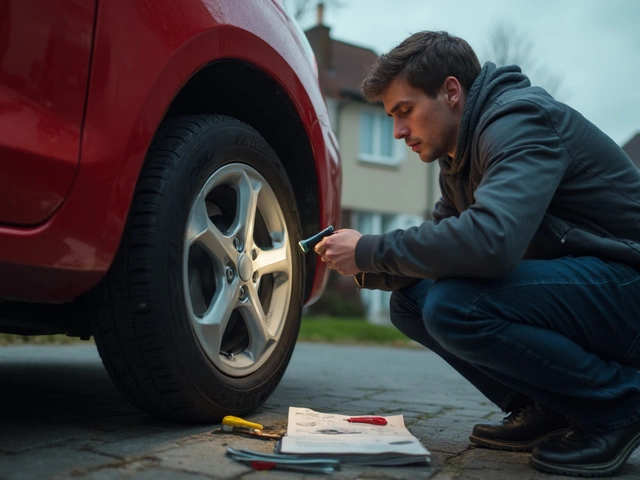Ever turned the key in your car's ignition and heard... nothing? Before you panic or call for a tow, let's consider the hero often hidden in the background—the fuel pump. It's like the unsung heart of your vehicle, pumping that sweet fuel from the tank to the engine. When it's not working right, your car won't either.
First things first, understanding a few telltale signs can save you from a headache. Is your car hesitating while accelerating? Is the engine sputtering when you drive at high speeds or failing to start entirely? These could mean your fuel pump is waving the white flag.
You don't need to be a mechanic to check on your pump. With a few basic tools—think screwdriver, pressure gauge, and a digital voltmeter—you're well on your way to diagnosing the issue. We'll break it down into easy steps, taking the mystery out of mechanics.
- Signs of a Faulty Fuel Pump
- Basic Tools and Equipment
- Step-by-Step Fuel Pump Testing
- Preventive Maintenance Tips
Signs of a Faulty Fuel Pump
A faulty fuel pump can turn your ride into an unexpected adventure. So, how do you know if your pump's about to quit on you? Here are some common signs to watch for.
1. Engine Sputtering
If your car starts sputtering while driving at high speeds, it could be due to inconsistent fuel delivery caused by a failing fuel pump. This hiccup in pump performance can disrupt the smooth flow needed for maintaining speed.
2. Difficulty Starting
Struggling to start a car is a classic sign of pump issues. The engine needs consistent fuel pressure to spring to life, and without a properly working pump, that pressure could be off.
According to AutoZone's experts, "A fuel pump that operates intermittently or fails to engage at all means the fuel your engine needs doesn't get there."
3. Loss of Power
Notice your car losing power, especially when climbing a hill or towing a load? This could be another red flag. A wearied fuel pump might not maintain the necessary pressure, affecting power output.
4. Sudden Engine Stalls
Your engine might randomly quit if your fuel pump can't maintain continuous fuel flow. Stalls are a serious hazard, particularly if they happen in traffic.
5. Check Engine Light
This handy dashboard buddy might illuminate due to fuel pump problems. While it's not specific, if combined with other symptoms, it's a good indicator to check your fuel system.
6. Fuel Tank Noise
A hearty hum or whining noise from your tank can signal a pump under stress. It usually hints at wear or potential failure.
Remember, early diagnosis can save you from larger headaches down the line. Don't let these symptoms slide; check your vehicle troubleshooting list and consider a professional opinion if needed.
Basic Tools and Equipment
Alright, ready to roll up your sleeves? Before diving into the job, let’s make sure you’ve got the basics covered. Checking your fuel pump doesn’t require a full garage of tools, but a few key items will make the task a lot smoother.
Must-Have Tools
- Flathead Screwdriver: Perfect for loosening clamps and other fittings. It's a staple in your toolkit.
- Digital Voltmeter: This handy device checks if your pump is getting the correct voltage, crucial for diagnosing electrical issues.
- Fuel Pressure Gauge: Essential for measuring the pressure in your fuel system. Low pressure reading? That might point directly to a problem.
Nice-to-Have Extras
- Socket Wrench Set: Helps if you need to remove any housing or panels for easier access to the pump.
- Work Gloves: Simple, but they protect your hands from muck and sharp edges.
- Safety Goggles: It’s always a good idea to protect your eyes, especially when you’re working with potentially splashing fuel.
If you’re missing any of these, your local auto shop or online retailers are the go-to places. Just make sure you have quality tools that won’t fail you halfway through the job. With these essentials, you're set to tackle that fuel pump check with confidence!

Step-by-Step Fuel Pump Testing
If you're ready to roll up your sleeves and figure out what's up with the fuel pump, you've come to the right spot. Checking your fuel pump doesn't have to be rocket science. Let’s break it down into simple steps to get you sorted out.
Step 1: Listen and Check the Fuse
Start by turning the key to the "On" position without starting the engine. Hear a faint buzz coming from the back? That’s your fuel pump priming, which is a good sign. No sound? Head to your fuse box and check the fuel pump fuse. If it's blown, replace it and check again.
Step 2: Use a Fuel Pressure Gauge
This tool is your best friend when diagnosing fuel system problems. Find the Schrader valve on the fuel rail – it looks kind of like a tire valve. Attach the gauge, and check the pressure readings with the car started. Ideal values vary, but you generally want something in the 30 to 45 psi range for most cars.
Step 3: Check the Electrical Connections
Grab a digital voltmeter. With the fuel pump relay energized, check for voltage at the pump's connector. You need around 12 volts for it to work right. If there's low voltage, inspect wiring or the relay.
Step 4: Inspect the Fuel Lines
Look for any visible fuel leaks or damaged fuel lines. A failing pump sometimes shows itself through leaks, and fixing these may relieve some pressure—and your pump!
Optional: Test Data
Not sure if your readings are normal? Here's a rough guide for clarity:
| Vehicle Type | Pressure (psi) |
|---|---|
| Sedan | 30-40 |
| SUV | 40-50 |
| Truck | 45-55 |
And there it is, you’ve done it! With these steps, checking your fuel pump doesn't seem daunting anymore. If any part seems wonky and you’re not sure, don’t hesitate to consult a pro to keep your ride smooth.
Preventive Maintenance Tips
Keeping your fuel pump in top shape isn't just for gearheads. It's something anyone can manage with a little know-how and regular attention. Prevention is definitely better than facing a breakdown on a rainy day in Bristol.
Routine Inspections
Get into the habit of checking your fuel pump every six months. Listen for the usual humming noise when you turn the ignition on. Silence could mean trouble.
Good Quality Fuel
It might sound obvious, but using high-quality fuel can make a big difference. Cheaper fuel often contains impurities that can clog filters and put extra stress on the pump.
Keep the Tank Full
Avoid running your car on low fuel. The pump is kept cool by the fuel it’s submerged in, so a fuller tank keeps the fuel system and pump running smoother and cooler.
Regular Filter Replacement
The fuel filter acts as the fuel system’s bouncer, stopping dirt and debris. Replacing it annually ensures nothing gunky reaches the pump.
Don't Ignore Symptoms
If your car's having trouble starting, don't ignore it. A quick check might save you costly repairs down the road.
By following these tips, you can extend the life of your fuel pump and keep your car running smoothly, reducing the risk of unexpected repairs and ensuring better fuel efficiency.






